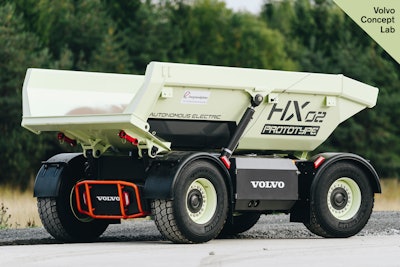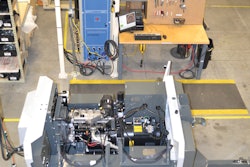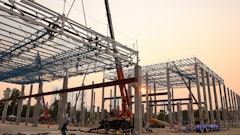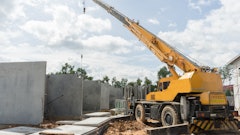
Volvo Construction Equipment (Volvo CE) is gearing up to test its electric site solution before the end of the year. The company is currently building a fleet of eight prototype HX2 autonomous, battery-electric load carriers. Other prototype machines that make up the electric site system include the LX1 hybrid wheel loader and the EX1 cable-connected excavator. Skanska Sweden will incorporate the demonstration machines into its operations and test the electric site concept at a quarry in western Sweden for 10 weeks at the end of 2018.
Volvo CE teamed up with its Skanska Sweden, the Swedish Energy Agency and two Swedish universities to collaborate on the SEK 203 million electric site project. Volvo CE is coordinating the project and is in charge of developing the machines and systems. Skanska Sweden is providing logistical solutions, application relevance and job site knowledge. The Swedish Energy Agency – a government agency for national energy policy issues – is helping to fund the project, and Linköping University and Mälardalen University are carrying out research. Two PhD students are looking at battery aging and energy management for electric vehicles, as well as functional safety. At this stage, the machines and technology involved in the electric site solution are part of a research project and are not commercially available.
Technology in Action
“The electric site research project is a step toward transforming the quarry and aggregates industry,” says Uwe Müller, Volvo CE’s Chief Project Manager for the electric site project. “By using electricity instead of diesel to power construction equipment in a quarry, we have the potential to deliver significant reductions in fuel consumption, CO2 emissions, environmental impact and cost-per-ton. We are combining intelligent machines, automation and electromobility as a door opener to developing completely new solutions to meet customer needs. The electrification of construction equipment will produce cleaner, quieter and more efficient machines – this represents the future of our industry.”
[VIDEO] Volvo Construction's Electric Site Working Model
 LX1 prototype electric hybrid wheel loader
LX1 prototype electric hybrid wheel loader
[VIDEO] Volvo HX2 Prototype is Next Step for Autonomous Hauler
The LX1 is Volvo CE’s prototype electric hybrid wheel loader. The machine can deliver up to a 50% improvement in fuel efficiency, as well as significant reductions in emissions and noise pollution compared to its conventional counterparts. The LX1 is a ‘series hybrid’ that incorporates a driveline that consists of electric drive motors mounted at the wheels, electric-driven hydraulics, an energy storage system, a significantly smaller diesel engine and new machine architecture, including a new design of the lifting unit. It’s this combination that enables the substantial gain in fuel efficiency. The prototype – which has 98% new parts and a fundamentally new machine design – can do the work of a wheel loader that’s one size larger.
[VIDEO] How Electromobility Impacts Volvo's LX1 Hybrid Loader Design and Operation
[VIDEO] Volvo is Using Electrification and Automation to Improve Efficiencies
 Volvo EX1 dual-powered, cable-connected excavator prototype
Volvo EX1 dual-powered, cable-connected excavator prototype
The base machine for the EX1 is a Volvo EC750 that has been upgraded to incorporate an electric motor in addition to the diesel engine. “To fit the new components in the machine without increasing its size required a significant amount of repackaging work,” continues Müller. “However, in terms of the operator interface and controls, nothing has changed – it’s operated in exactly the same way as a conventional Volvo excavator. If the cable is connected, the machine will automatically start in electric mode. If it’s not, it will start in diesel mode."
The electric site research project is predicted to reduce carbon emissions by up to 95% and reduce total cost of ownership by up to 25%. The project aims to electrify transport stages in a quarry – from excavation to primary crushing and transport to secondary crushing. It involves developing new machines, work methods and site management systems which together, form a complete site solution. New technology encompasses machine and fleet control systems and logistic solutions for electric machines in quarries.


















